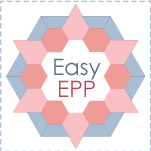Welcome to Stitched Sunday
'
I am sooooo glad you have joined me in the passion of stitching and embroidery. I will be sharing with you everything I can think of along the way that my Grandmother taught me, that I have learned from many embroiderers, teachers, books, articles and learned by experience along the way. Please share any comments, tips or ideas back to me and the many others following along. Just leave a comment on the related post. You will be easily able to follow along and the posts will remain on the blog so don't panic if you have another appointment on a Sunday – just use the category feature bottom right to search all posts in the class at once.
Today I am just going to go through the materials I will be using and demonstrating with. If you wish to follow along exactly and end up with the lovely book of stitches shown above then start collecting now. Or you can just do the bits you like, use your stash and materials available to you. Some things I have on my website – and I’ll let you know if I do – to help you find them easily but most things you will know and love already or you can find at your local stores.
Requirements for Stitch book cover
A wool kit – available for $10 inc Postage (extra postage for overseas orders) from The Quilted Crow
Outer fabric one fat quarter
Lining fabric – one fat quarter
16” x 12” batting
Threads: I used
Cottage Garden threads #401 Delphinium, #101 Forget me not
(Available here)
Presencia Finca Perle threads #1724 soft pink, #5229 sage green
Requirements For the pages: We will work on pages to include in the stitch book as we learn our stitches along the way.
Fabric to stitch on – any finely woven quality plain fabric – I am using a quality Quilters muslin in cream.
A stabiliser – most fabrics require a stabiliser to be placed on the back to get a nice result with even tension – no thread movement showing through to the front. The exception would be when using wool or wool flannel type fabrics. There are many to choose from.
I like fusible pellon – H630 – this is a very lightweight batting and fuses to the fabric with an iron. It gives a lovely quilted appearance and hides any crossing of threads on the back of your work. (available here)
You can use a woven lightweight interfacing such as weaveline
or another batting type product called Parlon – a little thinner than pellon. (available here)
Although I'm not going to say you HAVE to – I highly recommend using a hoop! it is an extra hand and holds the fabric taut whilst stitching saving cramps in your hand, giving much nicer even tension and cleaner work. I simply cannot get a suitable result without one.
There are many brands available and many are not expensive. I prefer the plastic hoops which can be tensioned very tight – they have a small lip on the inner ring to hold them firmly and a sturdy screw tightener. (available here) A 6-8” is best for general use – you need to be able to reach the centre of the hoop with your underneath finger.
Threads: there are thousands of thread varieties available. We are going to be learning several stitches which can all be done using several thread types. If not using exactly what I used or a similar weight thread get yourself some basic stranded cottons. These are widely available from many companies and are cheap and very useable. We will talk more about threads later in the program.
I used these cottage garden threads – stranded which are available here
And Presencia Finca Perle #16 threads (these are equivalent size to 1 1/2 strands of a stranded thread – they will be available here but not for a little while.) You can more easily find Perle #12 threads and these will also be good for our project.
Embroidery scissors – spoil yourself with a beautiful pair of special embroidery scissors – and DO NOT let anyone near them – a sharp pointed small pair is essential for a positive experience..
Marking pencils
There are many available – my favourites
A sewline ceramic pencil (available here)
The new Sewline air erasable pen – only stays on 2-7 days so for small projects and quick marking (available here)
You can use just an ordinary mechanical lead pencil or a pigma pen – but use care when marking not to make any mistakes as they wont be removable.
All of my patterns are fortunate to have an iron on transfer included so this is the easiest way to mark if working from a pattern.
Needles
We will be looking at needles more later but for this project and stitchalong I recommend starting with a Crewel needle set - #7/8 or a mixed set of needles – they usually come in a set of 5-10 sizes. Crewel needles have a large eye and a sharp point and are most commonly used for stitchery and many embroidery stitches.
If you cannot find them or are isolated you can get them here.
Okay, now you have a week to collect and prepare for our first real lesson next Sunday. In a minute though another post with some basics of embroidery.
hugs and happy stitching
Helen
'

5 Item(s)